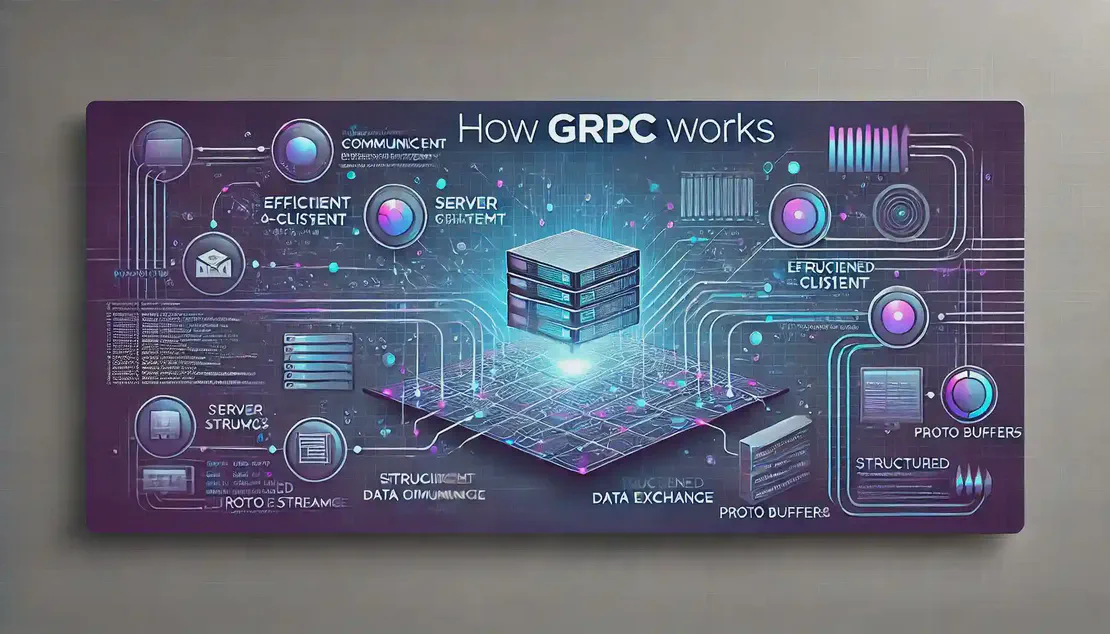
Main API Architecture Styles
- Vipul Kumar
- System design , Microservices , Architecture styles
- November 22, 2024
Table of Contents
🔄 REST — REST (Representational State Transfer) is a stateless architectural style that uses standard HTTP methods like GET, POST, PUT, and DELETE. It is simple, scalable, and flexible, supporting various data formats such as JSON and XML. However, it lacks a clear contract and has limited support for complex queries.
📜 SOAP — SOAP (Simple Object Access Protocol) is a protocol that uses XML for message format and is known for its strong security and transactional capabilities. It is complex and verbose, with slower performance due to XML overhead, and is mostly used in legacy systems.
🔍 GraphQL — GraphQL is a query language that allows clients to request specific data, reducing over-fetching. It provides a flexible and efficient way to interact with APIs but requires a more complex setup and can be challenging to cache.
🔗 gRPC — gRPC (Google Remote Procedure Call) is a high-performance, open-source framework that uses HTTP/2 for transport. It supports multiple languages and is efficient for real-time communication but can be complex to implement.
🔄 WebSocket — WebSocket is a protocol for full-duplex communication channels over a single TCP connection. It is ideal for real-time applications but requires a persistent connection, which can be resource-intensive.
🔔 Webhooks — Webhooks are user-defined HTTP callbacks that allow real-time communication and notifications. They are simple to implement but can be less secure and reliable if not properly managed.
REST and SOAP
🌐 REST — REST is widely used for web services due to its simplicity and scalability. It is stateless, meaning each request from a client contains all the information needed to process the request.
📜 SOAP — SOAP is known for its strong security features and is often used in enterprise environments where security and reliability are critical. It uses XML for message formatting and can operate over any protocol such as HTTP, SMTP, TCP, etc.
🔄 REST Pros — REST is easy to use and understand, follows web standards, and supports caching and statelessness, making it fast and scalable.
📜 SOAP Pros — SOAP has a strict contract, supports complex operations, and provides detailed error handling through SOAP faults.
🔄 REST Cons — REST lacks a clear contract, making it potentially inconsistent, and does not support complex queries well.
📜 SOAP Cons — SOAP is complex and verbose, does not follow web principles, and is not as scalable or performant as REST.
GraphQL and gRPC
🔍 GraphQL — GraphQL allows clients to specify exactly what data they need, reducing over-fetching and under-fetching of data. It is particularly useful for complex data structures.
🔗 gRPC — gRPC is designed for high-performance communication and supports multiple programming languages. It uses HTTP/2 for transport, which allows for multiplexing and efficient binary serialization.
🔍 GraphQL Pros — GraphQL provides flexibility in data retrieval, allowing clients to request only the data they need. It also supports real-time updates through subscriptions.
🔗 gRPC Pros — gRPC is efficient for real-time communication, supports multiple languages, and provides strong typing through Protocol Buffers.
🔍 GraphQL Cons — GraphQL can be complex to set up and may require more effort to implement caching strategies.
🔗 gRPC Cons — gRPC can be complex to implement and may not be as widely supported as REST or SOAP.
WebSocket and Webhooks
🔄 WebSocket — WebSocket provides a full-duplex communication channel over a single TCP connection, making it ideal for real-time applications like chat or gaming.
🔔 Webhooks — Webhooks are user-defined HTTP callbacks that allow real-time communication and notifications. They are often used for event-driven architectures.
🔄 WebSocket Pros — WebSocket allows for real-time data exchange and is efficient for applications requiring constant data updates.
🔔 Webhooks Pros — Webhooks are simple to implement and allow for real-time notifications without polling.
🔄 WebSocket Cons — WebSocket requires a persistent connection, which can be resource-intensive and may not be suitable for all applications.
🔔 Webhooks Cons — Webhooks can be less secure and reliable if not properly managed, as they rely on external systems to handle events.
Follow me on: LinkedIn | WhatsApp | Medium | Dev.to | Github

